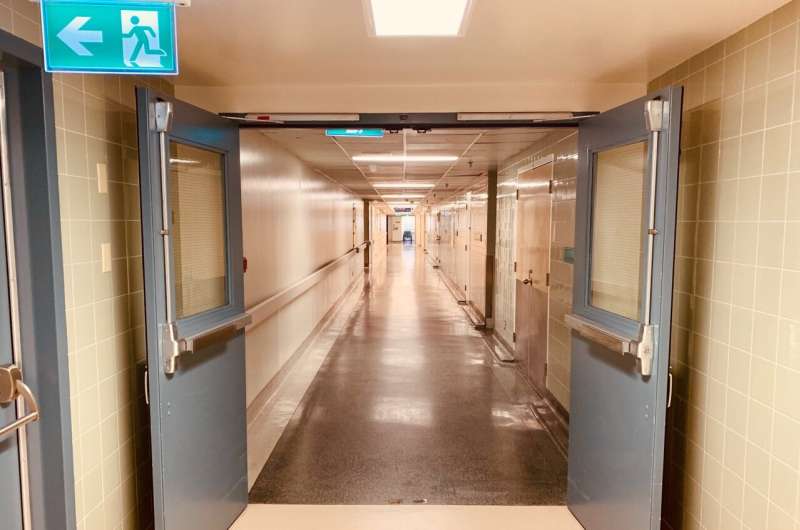
It generally takes as long as 17 years for hospitals and clinics to implement a practice or treatment after the first evidence shows a benefit in patients. This time lag is driven by a number of factors, including building consensus among different medical disciplines, and barriers in communication across and within hospitals. A new multi-institutional study co-led by Jefferson and UCSF shows how hospitals overcame some of these barriers and rapidly adapted patient care. With data collected from over 50 academic medical centers across the U.S., in the largest survey of its kind, the research sheds light on important strategies that can help healthcare systems respond to both health crises and ongoing diseases.
“The translation of evidence to practice in medicine is notoriously slow,” says Alan Kubey, MD, a specialist in hospital medicine at Jefferson Health and Mayo Clinic and the co-lead of the study. “For example, despite the clear mortality benefit of giving beta blockers after a heart attack, it took decades from the publication of evidence to the majority of hospitals using it. Given the singular focus on COVID-19, we were interested to see how nimble hospitals were able to shift care based on rapidly changing, and sometimes conflicting, evidence.”
The new findings published in JAMA Network Open on April 4th are borne out of the Hospital Medicine Reengineering Network (HOMERuN), a collaborative of hospitalists and researchers at leading medical centers nationwide. Founded in 2011, the organization aims to improve quality of care by evaluating and refining best practices across institutions. Dr. Kubey has been a member since 2020.
The researchers surveyed members of the HOMERuN network between December 2020 and February 2021. In total, 52 hospitals, the majority of which identified as academic medical centers, responded. They found that there was remarkable consistency in the interventions hospitals used based on available clinical evidence and national guidelines; the most striking example was the near universal adoption (94-100% of survey responders) of dexamethasone for patients requiring at least four liters of supplementary oxygen; it took only six-eight months to adopt this treatment after a randomized clinical trial demonstrated a survival benefit. The researchers credit this translation of evidence in part to rapid information sharing among hospitals and intense focus of multidisciplinary COVID-19 treatment guideline committees.
“We were all learning in real-time and there was a resolve to collaborate,” says co-lead of the study Amy Chang Berger, MD, Ph.D. at University of California, San Francisco (UCSF). “Hospitals were sharing protocols online, huge amounts of data were coming in almost daily in peer-reviewed journals and pre-print servers, and many doctors were also detailing their experiences on social media.”
In order to ensure rigor in interpreting evidence, 94% of survey respondents created multi-disciplinary teams that included infectious disease, hospital medicine, pulmonary critical care, pharmacy and emergency medicine. These varied perspectives were critical in generating comprehensive COVID-19 guidelines and protocols.
The researchers also found that the majority of the hospitals they surveyed used multiple modes to disseminate their guidelines. In addition to email blasts and institutional websites, hospitals used a novel approach: as many as 73% of respondents integrated guidelines into order sets, which are a list of directives and appropriate treatments, and 65% of respondents used accompanying note templates that guided providers through their diagnostic plan.
“These order sets and note templates became a one-stop shop of concise information,” says Dr. Kubey. “It helped nudge the practitioner toward evidence-based strategies, like the correct dose of dexamethasone, remdesivir timing, respiratory support, etc. and enabled quick decision making at the bedside.”
While there was consistency in these effective practices across hospitals, the researchers also found a common pattern of treatment over no treatment, particularly when there were conflicting guidelines or evidence. “It’s a reflection of practitioners’ bias to do something rather than nothing, when in fact a treatment could be doing more harm than good,” Dr. Kubey says. “It’s an important lesson in handling uncertainty, encouraging medical teams to be critical in considering the available evidence, and developing guidelines that leave less room for interpretation.”
“I hope this study provides insight on how we can expedite the evaluation of evidence and implement best practices,” says Andrew Auerbach, MD, also at UCSF and one of the founding members of HOMERuN. “These strategies helped during COVID-19, but they can be applied to diseases like diabetes or hypertension that are major burdens to our healthcare system. We also need to learn how best to de-implement practices that do not work or, worse yet, harm our patients.”
Source: Read Full Article
